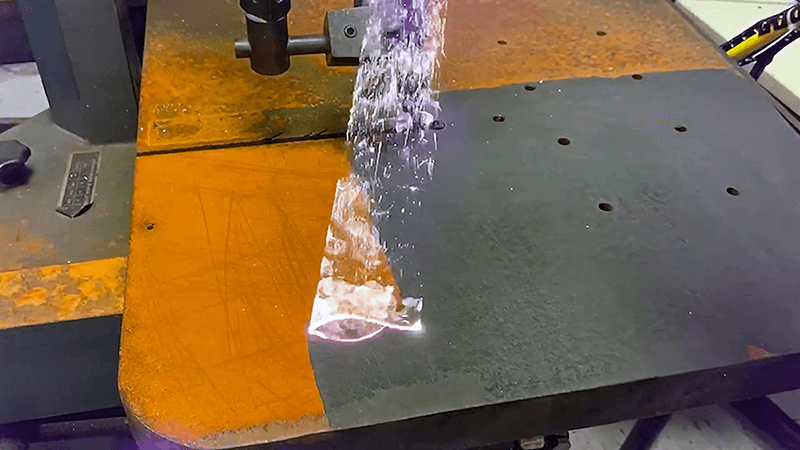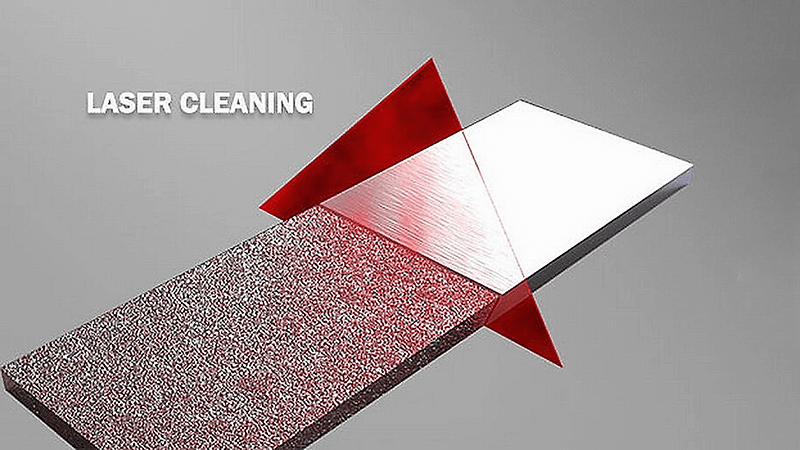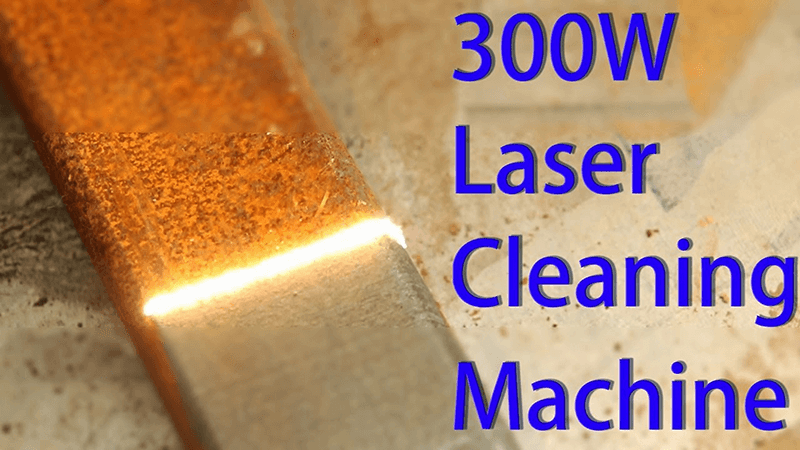Laser cleaning has changed the way industries approach surface treatment. The old methods were slow, messy, and harmful to the environment. Today, laser cleaning machines from Kirin Laser bring speed, precision, and sustainability to modern manufacturing.
Industrial laser cleaning machines revolutionize surface cleaning by removing rust, paint, oil, and contaminants without damaging the base material. They work fast, require minimal maintenance, and reduce environmental impact, making them ideal for sectors like automotive, aerospace, and heavy machinery.
Laser cleaning represents a turning point for manufacturers. It’s not just another cleaning method—it’s a smarter, greener, and more efficient way to maintain equipment and prepare materials for production.

Do laser cleaning machines work?
Laser cleaning might sound futuristic, but it’s already a proven technology in factories and workshops worldwide. The idea of removing rust or paint with a beam of light may seem unbelievable at first, yet the results speak for themselves. Many clients who doubted its power have turned into strong believers after seeing its performance on metal, stone, and composite surfaces.
Yes, laser cleaning machines work effectively by using high-energy laser pulses to vaporize surface contaminants without affecting the base material. The process is contactless, precise, and suitable for delicate or complex surfaces where traditional cleaning might cause damage.
How laser cleaning technology works
Laser cleaning operates through a principle called laser ablation1. When the laser beam hits the surface, the contaminants—such as rust, paint, or grease—absorb the light energy, heat up, and evaporate or are blown away by micro-explosions.
Here’s a simplified overview:
| Step | Process Description | Outcome |
|---|---|---|
| 1 | Laser pulse hits contaminated surface | Energy absorbed by rust or paint |
| 2 | Rapid heating and evaporation | Contaminant layer breaks away |
| 3 | Safe removal of debris | Clean base material remains intact |
The advantages for industries
Unlike abrasive blasting or chemical washing, laser cleaning doesn’t require consumables. There are no sand particles, no solvents, and no waste residue to handle. For our clients in automotive and aerospace manufacturing, this means faster operations, cleaner environments, and lower costs in the long term.
At Kirin Laser, we’ve seen countless success stories. One client used to lose hours each week to manual rust removal. After integrating our 1000W laser cleaning2 machine, their downtime dropped by 70%. The equipment itself paid for its cost in under six months.

What training is needed to use a laser cleaner?
Many assume laser technology is complicated or requires advanced technical knowledge. In reality, operating a laser cleaning system is much simpler than it looks. Most of our clients adapt within a few hours of training. The key lies in understanding safety, beam settings, and surface response.
Basic operator training is enough to use a laser cleaner safely and efficiently. Users learn how to adjust laser parameters, maintain focus distance, and follow safety guidelines. No advanced technical degree is required, though proper certification and protective measures are essential.
What operators learn during training
Kirin Laser provides training programs for all machines we supply, whether through direct purchase or OEM orders. These sessions cover:
| Training Area | Description | Duration |
|---|---|---|
| Safety Protocols3 | Understanding laser radiation and protective gear | 1–2 hours |
| System Setup | Connecting optics, power, and cooling units | 1 hour |
| Operation Basics | Adjusting power, frequency, and scanning patterns | 2–3 hours |
| Maintenance | Cleaning lenses, checking fiber, and diagnostics | 1 hour |
By the end of training, operators can handle the entire cleaning process confidently. The intuitive software interface guides users step-by-step, ensuring safe and precise operation.
Why training matters
Even though laser cleaning is automated, understanding the laser-material interaction4 improves results. Improper settings can lead to inefficient cleaning or slight surface discoloration. Our goal at Kirin Laser is not just to sell machines—but to empower users to achieve perfect results every time.
Many distributors who work with us include training in their after-sales service packages. This ensures consistent performance and long-term customer satisfaction.

Can laser cleaning remove paint?
When clients first contact us, one of the most common questions they ask is about paint removal. Traditional methods like sandblasting or chemical stripping are messy and damaging. The idea of removing paint cleanly and safely is a big selling point for laser systems.
Laser cleaning can effectively remove paint from metal, concrete, and composite surfaces without using chemicals or abrasives. The laser selectively targets paint layers, vaporizing them while leaving the base material intact. This makes it ideal for surface preparation before welding, coating, or bonding.
How laser cleaning removes paint
Paint layers are usually thin and thermally sensitive. Laser beams can be tuned precisely to a wavelength and energy level that targets the paint but not the metal underneath.
Here’s a breakdown:
| Factor | Traditional Method | Laser Cleaning |
|---|---|---|
| Chemical Use | Requires solvents | No chemicals |
| Surface Damage | Possible abrasion | None |
| Cleanup | Time-consuming | Minimal |
| Cost | Ongoing materials | One-time investment |
Case from the field
A customer from the ship maintenance industry used our Kirin Laser 2000W5 model for hull restoration. Before, they spent days removing multiple paint layers. After switching to laser cleaning6, they reduced surface preparation time by 60%. The process became cleaner, safer, and more sustainable.

Does laser cleaning remove rust?
Rust is one of the toughest problems in manufacturing. It affects machines, tools, and components daily. Before laser cleaning, companies relied on sanding, grinding, or acid treatments. Those methods were slow, dangerous, and inconsistent. Today, lasers solve that problem in minutes.
Laser cleaning efficiently removes rust by vaporizing oxides from the surface without harming the metal underneath. The process is precise, fast, and non-contact, making it ideal for cleaning tools, molds, and production equipment.
How rust removal works
Rust, or iron oxide, absorbs laser energy easily. The beam’s heat breaks the oxide bonds, and the particles are ejected from the surface. The base metal remains untouched.
For heavy corrosion, operators can adjust the pulse energy7 or scanning speed8 to remove deeper layers gradually.
| Parameter | Setting | Result |
|---|---|---|
| Laser Power | 500–2000W | Faster removal |
| Frequency | 20–50 kHz | Smoother surface |
| Scan Speed | 100–500 mm/s | Adjusts precision |
Why rust removal matters
Our automotive client story is a perfect example. They struggled with rust on assembly-line rollers, causing downtime every few weeks. After installing a Kirin Laser cleaner, they eliminated manual scraping entirely. Rust removal became part of routine maintenance, saving both time and money.
Laser cleaning not only restores metal surfaces—it prevents further corrosion by exposing clean, bond-ready metal. That’s why industries from aerospace to rail maintenance rely on it for both repair and preservation.

How do I choose a laser cleaning machine?
With so many options on the market, choosing the right machine can be confusing. Power levels, configurations, and cooling systems all matter. The best choice depends on your specific cleaning needs—whether you’re removing light oxides or heavy paint coatings.
Choosing a laser cleaning machine depends on the type of material, level of contamination, and desired productivity. Key factors include laser power, pulse frequency, portability, cooling system, and after-sales support. Always consult experienced manufacturers like Kirin Laser for personalized recommendations.
Key selection criteria
| Factor | Explanation | Recommended Option |
|---|---|---|
| Power Output9 | Determines cleaning strength | 1000–2000W for industrial use |
| Portability | Handheld or fixed system | Handheld for versatility |
| Cooling | Air or water-cooled | Water-cooled for high power |
| Maintenance | Ease of use and parts availability | OEM-supported systems |
| After-Sales Support10 | Training, warranty, and service | Kirin Laser global support |
Kirin Laser’s approach
We help clients evaluate their cleaning tasks before choosing a system. Our engineers test materials under different settings to find the ideal laser parameters. Whether it’s for heavy-duty rust removal or precision paint stripping, we offer custom-built and OEM options that fit your operation perfectly.
One of our partners in Europe started with a 1000W handheld model for light rust removal. As their production expanded, we upgraded their setup with a 2000W system and custom nozzles. That flexibility is what keeps long-term clients with us.

Conclusion
Industrial laser cleaning machines11 are transforming how industries maintain, repair, and prepare surfaces. They clean faster, safer, and greener than traditional methods. At Kirin Laser, we have seen how this technology boosts productivity and sustainability for businesses worldwide. From rust to paint, every challenge has a precise laser solution. For anyone seeking efficiency, precision, and environmental responsibility, laser cleaning is not just the future—it’s the present.
-
Learn about the science behind laser ablation and its effectiveness in removing contaminants. ↩
-
Explore the advantages of laser cleaning technology for efficient and eco-friendly surface preparation. ↩
-
Explore this link to understand essential safety measures that ensure operator protection during laser operations. ↩
-
Learn about the science behind laser-material interaction to enhance your cleaning efficiency and avoid common pitfalls. ↩
-
Discover detailed specifications and user reviews of the Kirin Laser 2000W to see why it's favored in the industry. ↩
-
Explore the advantages of laser cleaning, including efficiency and environmental benefits, to understand its growing popularity. ↩
-
Understanding pulse energy adjustments can optimize rust removal efficiency, saving time and preserving metal quality during maintenance. ↩
-
Understanding scanning speed's impact on rust removal can optimize precision and efficiency, crucial for industries relying on laser cleaning technology. ↩
-
Understanding power output is crucial for selecting the right cleaning system for your needs. ↩
-
Exploring after-sales support can help ensure you receive the best service and training for your equipment. ↩
-
Finding the best laser cleaning machine and laser cleaning solutions from Kirin Laser, clicking this link to get all your needs for your business. ↩





